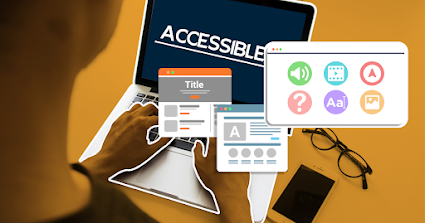Web design is not only about aesthetics and functionality but also about inclusivity. Accessibility in web design ensures that people with disabilities can access and use websites without any barriers. In this blog post, we'll discuss the role of accessibility in web design and share best practices for creating inclusive websites.
- Understand the Importance of Accessibility
Accessibility in web design ensures that people with disabilities can use websites and digital platforms without any barriers. It also improves the user experience for everyone, including those without disabilities. As a web designer, it's essential to understand the importance of accessibility and incorporate it into your design process.
- Follow Best Practices for Accessibility
Several best practices can help you create an accessible website. For example, ensure that the website is keyboard-friendly, provide alt text for images, and use headings and subheadings to structure content. The website should also be compatible with assistive technologies such as screen readers and speech recognition software.
- Design with Inclusivity in Mind
Inclusive design means designing products and services that are accessible and usable by as many people as possible, regardless of their abilities. When designing a website, consider the needs of people with disabilities, such as vision or hearing impairments. For example, use high-contrast colors and provide transcripts or captions for videos.
- Test for Accessibility
Testing is an essential part of the accessibility design process. Use tools such as automated accessibility checkers and manual testing to identify and fix any accessibility issues. It's also a good idea to involve people with disabilities in the testing process to get feedback and improve the user experience.
- Stay Up to Date on Accessibility Standards
Accessibility standards are constantly evolving, and it's essential to stay up to date on the latest guidelines and regulations. In the United States, the Web Content Accessibility Guidelines (WCAG) provide guidance on creating accessible websites. Following these guidelines can help ensure that your website is compliant with accessibility standards.
Conclusion
Accessibility is an essential aspect of web design, and it's crucial to consider the needs of people with disabilities when designing a websiteBy following best practices for accessibility, designing with inclusivity in mind, testing for accessibility, and stay. ing up to date on accessibility standards, you can create an inclusive website that improves the user experience for everyone. Remember, designing for accessibility is not only the right thing to do, but it can also benefit your website's search engine optimization and user engagement.




